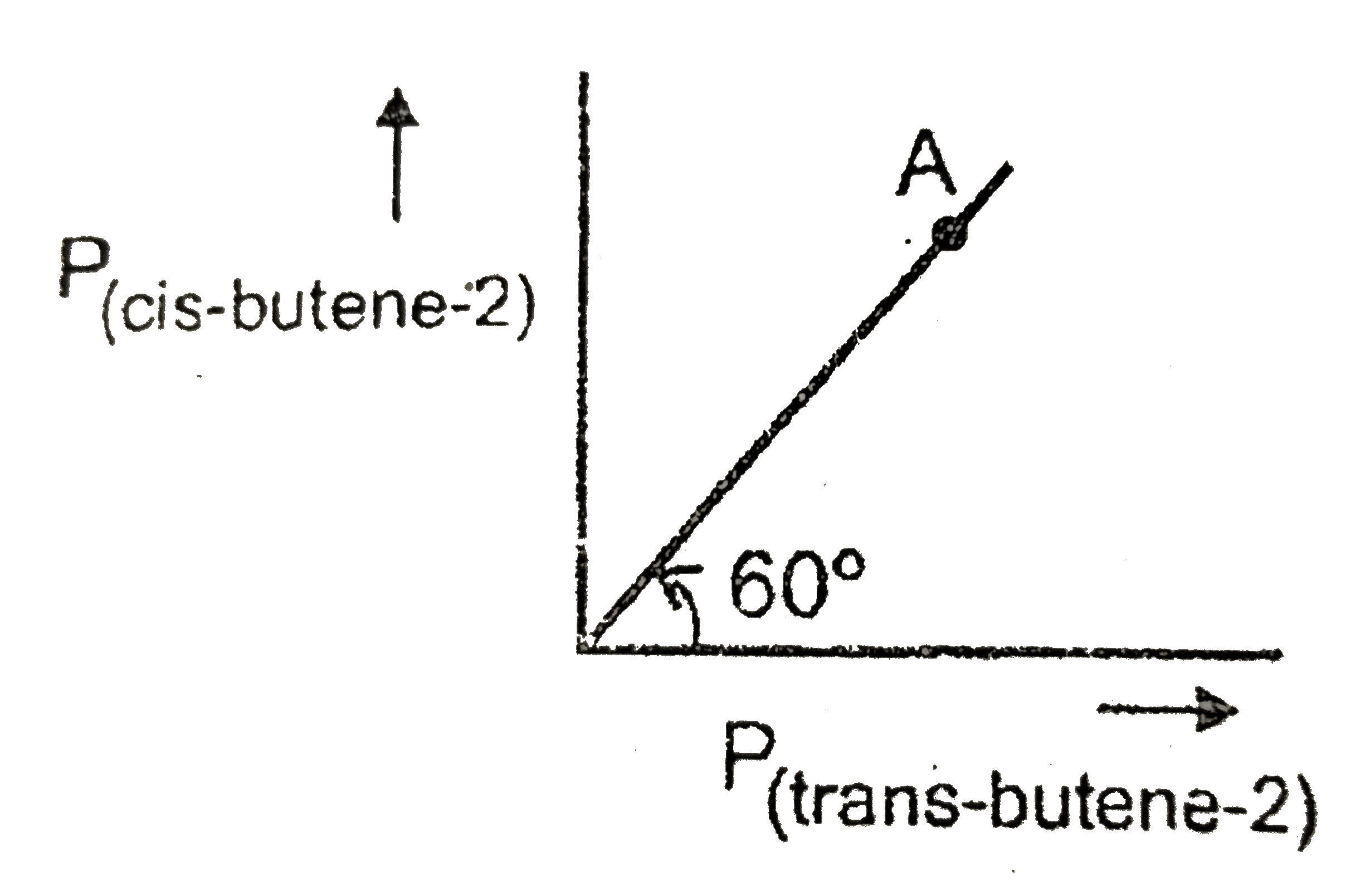The standard state Gibbs's energy change for the isomerisation reaction cis−2−pente≠→trans−2−pente≠ is −3.67kJmol−1 at 400K. If more trans−2−pente≠ is added to the reaction vessel, then:
(A) more cis-2-pentene is formed
(B) equilibrium remains unaffected
(C) additional trans-2-pentene is formed
(D) equilibrium is shifted in forward direction
The correct Answer is:A
To solve the problem regarding the isomerization reaction of cis-2-pentene to trans-2-pentene, we will follow these steps:
Step 1: Understand the Reaction and Given Data
The isomerization reaction is:
cis-2-pentene⇌trans-2-pentene
We are given that the standard Gibbs free energy change (ΔG∘) for this reaction at 400 K is:
ΔG∘=−3.67kJ/mol
Step 2: Relate Gibbs Free Energy to Equilibrium Constant
The relationship between the Gibbs free energy change and the equilibrium constant (Kc) is given by:
ΔG∘=−RTlnKc
Where:
- R is the universal gas constant (8.314 J/mol·K)
- T is the temperature in Kelvin
Step 3: Calculate the Equilibrium Constant Kc
We can rearrange the equation to find Kc:
Kc=e−ΔG∘/RT
First, convert ΔG∘ from kJ to J:
ΔG∘=−3.67kJ/mol=−3670J/mol
Now substituting the values:
Kc=e3670/(8.314×400)
Calculating the exponent:
Kc=e(3670/3325.6)≈e1.103≈3.01
Step 4: Analyze the Effect of Adding More trans-2-pentene
According to Le Chatelier's principle, if we add more trans-2-pentene to the system, the equilibrium will shift to counteract this change. Since we are increasing the concentration of the product (trans-2-pentene), the equilibrium will shift to the left to produce more reactant (cis-2-pentene).
Step 5: Conclusion
Thus, when more trans-2-pentene is added, the equilibrium will shift towards the formation of cis-2-pentene. Therefore, the correct answer is that more cis-2-pentene is formed.
Final Answer
More cis-2-pentene is formed.
---
The isomerization reaction is:
cis-2-pentene⇌trans-2-pentene
ΔG∘=−3.67kJ/mol
The relationship between the Gibbs free energy change and the equilibrium constant (Kc) is given by:
ΔG∘=−RTlnKc
Where:
- R is the universal gas constant (8.314 J/mol·K)
- T is the temperature in Kelvin
We can rearrange the equation to find Kc:
Kc=e−ΔG∘/RT
ΔG∘=−3.67kJ/mol=−3670J/mol
Kc=e3670/(8.314×400)
Kc=e(3670/3325.6)≈e1.103≈3.01
According to Le Chatelier's principle, if we add more trans-2-pentene to the system, the equilibrium will shift to counteract this change. Since we are increasing the concentration of the product (trans-2-pentene), the equilibrium will shift to the left to produce more reactant (cis-2-pentene).
Thus, when more trans-2-pentene is added, the equilibrium will shift towards the formation of cis-2-pentene. Therefore, the correct answer is that more cis-2-pentene is formed.
More cis-2-pentene is formed.
Similar Questions
What are the products of addition of D2 to trans-2-pentene.
View Solution3 methyl -2- pentene on reaction with HOCI gives
View SolutionFor the following isomerisation reaction
cis-butene-2⇔trans−butene-2 Kp=1.732

Which of the following statement is true at point A?
View SolutionThe standard free energy change for a reaction is −213.3KJmol−1at25∘C. If the enthalpy change of the reaction is −217.77KJmole−1 . Calculate the magnitude of entropy change for the reaction in Joule mole−1
View SolutionStandard enthalpy and standard entropy changes for the oxidation of ammonia at 298 K are −582.64kJmol−1and−150.6Jmol−1k−1 , respectively. Standard Gibb's energy change for the same reaction at 298 K is
View SolutionStandard enthalpy and standard entropy change for the oxidation of NH3 at 298K are −382.64KJmol−1 and 145.6Jmol−1 respectively. Standard free energy change for the same reaction at 298K is
View SolutionThe standard Gibbs energy change at 300K for the reaction 2A⇔B+C is 2494. 2J. At a given time, the composition of the reaction mixture is [A]=12,[B]=2 and [C]=12. The reaction proceeds in the
(R=8.314JK/mole=2.718)
View SolutionThe standard potential of a cell using the reaction
 is 1.12. The heat of the reaction is −504.2kJmol−1 at 25∘C. Calculate the entropy change.
is 1.12. The heat of the reaction is −504.2kJmol−1 at 25∘C. Calculate the entropy change.
View SolutionIn a fuel cell, methanol if used as fuel and oxygen gas is used as an oxidiser. The reaction is
CH3OH(l)+32O2(g)→CO2(g)+2H2O(l)
Calculated standard Gibbs free enegry change for the reaction that can be converted into electrical work. If standard enthalpy of combustion for methanol is −702kJmol−1, calculate the efficiency of conversion of Gibbs energy into useful work.
ΔfGΘ for CO2,H2O,CH3OH,O2 is −394.00,−237.00,−166.00and 0kJmol−1 respectively.
View SolutionThe activation energy of a first order reaction at 300K is 60 kJmol−1. In the presence of a catalyst, the activation energy gets lowered to 50kJmol−1 at 300K. How many times the reaction rate change in the presence of a catalyst at the same temperature ?
View Solution
